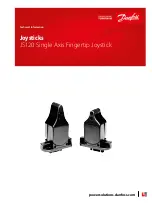
CMC3
- Monitor Controller
17
Cut It Out...
Using the left and right cut switches will highlight the stereo balance of each
channel. In stereo the mix sounds ok, however, it may be that you want an instrument
to be panned so far left that it doesn’t occur at all in the right channel, by cutting the
left and only hearing the right channel you will hear whether the instrument bleeds
across, and panning adjustment can be made.
Monogising
Check your mix in mono - often! Just because a mix sounds good in stereo doesn't
mean it will sound good when the left and right channels are combined. Why should
you care if your mix sounds good in mono? Well, most live music venues and dance
club sound systems are mono - running the PA or sound system in mono is common
practice to ensure music sounds good everywhere in the room because it removes
the ‘sweet spot’ and the complex phase issues of stereo. In many cases the low
frequencies will be put through a crossover and summed to mono before being
sent to the sub, such as in a home theatre system, for example. Monogising is also
necessary when testing the audio for use on non-standard applications such as
for broadcast or mobile phone.
In addition, monogising will highlight phase problems. In some cases, when you
activate the Mono switch you may hear comb-filtering, which will colour the sound of
your mix and cause peaks and dips in its frequency response. When a stereo mix is
combined into mono any elements that are out of phase will drop in level or may
even disappear completely. This could be because left and right outputs are wired
out of phase but its more likely to be due to phase cancellation. What causes
phase cancellation?
Many stereo widening effects and techniques, such as chorus;
Simultaneous direct box and mic recording - If you've ever recorded a guitar
simultaneously through a direct box and a microphone, you may have noticed
the time alignment problems this causes. This type of situation can often be
fixed by careful mic placement, or realigning the waveform in a DAW;
Where more that one microphone is used to record a source - on a multi-miked
drumkit two mics may pick up the same signal and cancel each other out. One
handy tip is to adjust the panning of your drums whilst in mono - the phase
cancellation of the drums will improve, and sound even better when reverted
back to stereo.
Listening in mono also highlights problems with the stereo width and balance of
the mix and is more apparent when you use a lot of stereo-widening or width-
enhancing techniques and tools. Switching mono in and out fairly quickly may
make it apparent that the centre of the mix is shifting to the left or right, something
that may go unnoticed if only working in stereo.
True Mono
As a mono signal would normally originate from a single source it would be wrong
to simply activate the mono switch - as both left and right speakers are still active.
When you listen to a mono signal on two speakers, you hear a false or 'phantom'
image which is derived midway between the speakers, but because both speakers
are contributing to the sound, the level of the bass seems to be over-inflated. To
truly hear a monogised signal via one speaker (the way everyone else will hear it)




































